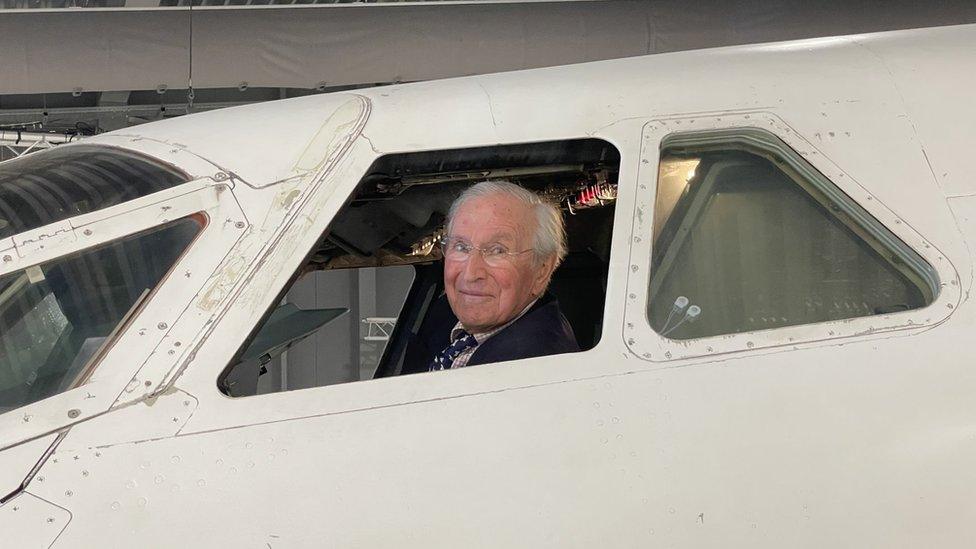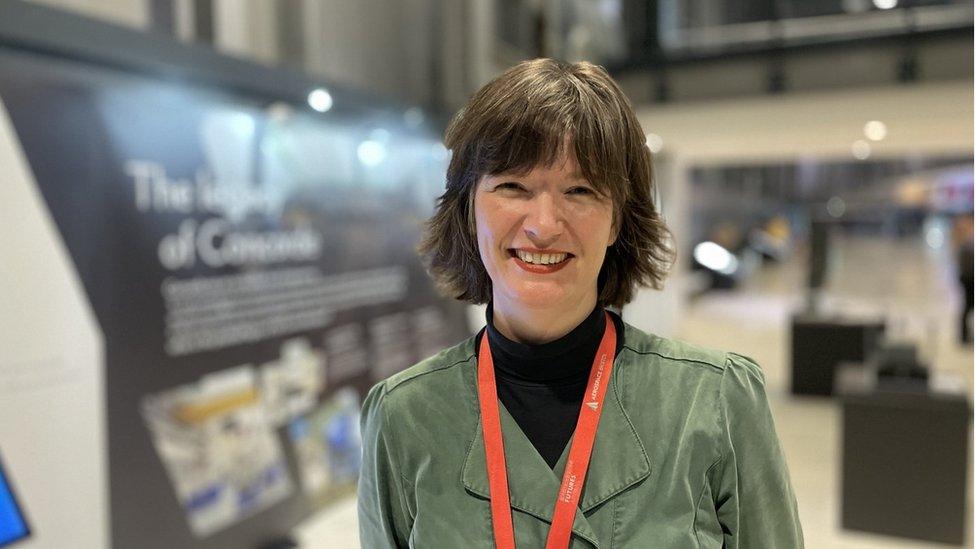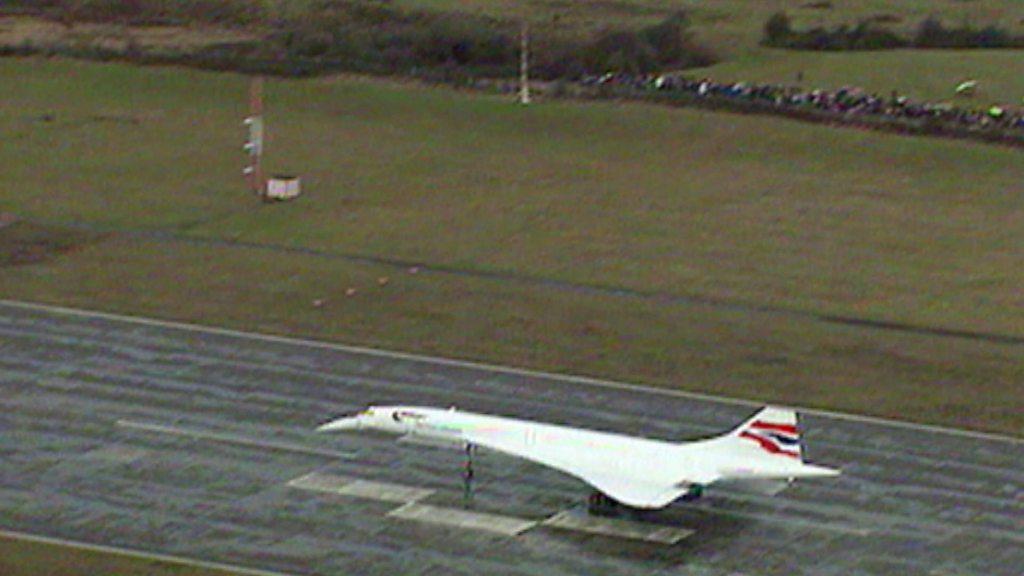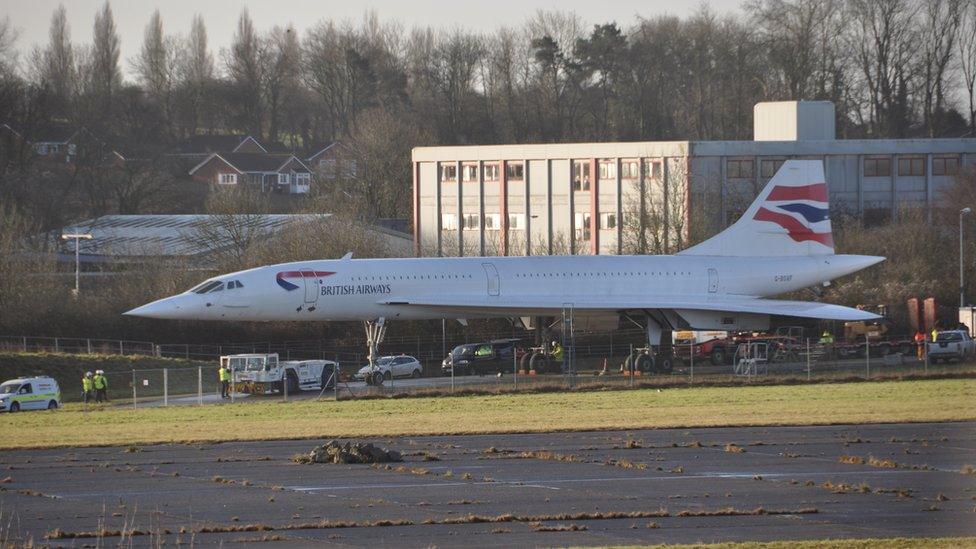Concorde's longest-serving pilot shares his memories
- Published

The last Concorde flight arrived at Filton Airport on 26 November, 2003
Concorde's longest-serving pilot has said the plane was "British design at its best".
It has been 20 years since the iconic aircraft touched down for the last time at Filton Airport, on the edge of Bristol.
To celebrate the anniversary, memories have been shared of the world's first and only supersonic passenger plane.
Concorde carried many notable passengers over its 27 year career, including Queen Elizabeth II.

Queen Elizabeth II used Concorde to travel home from Barbados in 1977
Captain Colin Morris flew the Concorde aircraft for British Airways until 1995 and was the plane's longest serving pilot.
He said: "[This anniversary] is a testament to the engineers of the 50s and 60s. The Concorde is British design at its best."
"Our life was basically facing backwards entertaining visiting passengers, that was the fun of it. Just about everyone down the back was an enthusiast.
"From John Travolta, to Frank Sinatra, to Shirley MacLaine, all the politicians, film stars and sports stars of their day.
"Every flight had somebody on it who was going to entertain you," he added.

Colin Morris was a pilot for British Airways until 1995
Construction of the first prototypes for Concorde began in 1965. The plane was jointly designed by Bristol Airplane Company and French company Sud Aviation.
The aircraft's first commercial flight was on 21 January 1976 and its last was on 26 November 2003.
To mark the November anniversary, the Concorde aircraft on display at Aerospace Bristol will droop its nose twice, at 11:30 GMT and then at 13:07, which was the minute the final flight touched down in Filton.
The drooped nose was an iconic design feature to improve the pilot's view of the ground during take-off and landing.
On 25 July 2000, Air France Flight 4590 crashed shortly after take-off with all 109 occupants and four on the ground killed. This was the only fatal incident involving Concorde.
Commercial operations never fully recovered from publicity after the crash, and concerns over pollution and ground noise contributed to the joint Franco-British decision to cease Concorde flights in 2003.

Amy Seadon said there was a mix of "pride and sadness" to see Concorde come home
Head of collections at Aerospace Bristol, Amy Seadon, said: "A lot of people don't think that there is a legacy of Concorde, perhaps because there isn't an equivalent still flying right now.
"In actual fact, a lot of the technology went on to be used elsewhere. There is a great legacy of innovation in the south-west of England, around Bristol, and the infrastructure that went on to become Airbus and so on."
"A lot of people around this area have a very vivid memory of Concorde and its final flight. There's a lot of pride as well as sadness to see that aircraft come home," she added.

Follow BBC West on Facebook, external, X, external and Instagram, external. Send your story ideas to: bristol@bbc.co.uk, external
- Published16 February 2023

- Published26 November 2018

- Published7 February 2017
